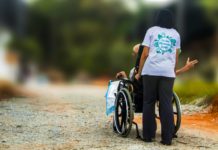
Tilt training can reduce symptoms of recurrent fainting or syncope by upto 85%
Tilt training effectively prevents fainting, according to research presented today at EHRA 2019, a European Society of Cardiology (ESC) congress. The programme also improved quality of life, reduced the worry and fear about future fainting and enabled patients to return to work.
Fainting or syncope is a transient loss of consciousness due to acute reduction of blood supply to the brain with rapid, spontaneous and complete recovery. About one in three people suffer a fainting episode in their lifetime in the general population.
Neurally mediated syncope (NMS), also called as reflex, neurocardiogenic or vasovagal syncope is the most common form of fainting and a frequent reason for emergency department visits. The common triggers are standing in a hot, crowded space, emotional stress or standing up too quickly. Most cases of fainting is harmless, but a small percentage of people faint due to an irregular heartbeat, or arrhythmia, hence requiring immediate evaluation with electrocardiogram or ECG.
The common triggers are standing in a hot, crowded space, emotional stress or standing up too quickly. Most cases of fainting is harmless, but a small percentage of people faint due to an irregular heartbeat, or arrhythmia, hence requiring immediate evaluation with electrocardiogram or ECG
In some patients fainting occurs repeatedly without any warning signs, and medications or devices do not help. Previous studies have also showed that tilt table training exercises improved patients with recurrent neurocardiogenic syncope. The study enrolled 102 patients (average age 46) who had fainted at least twice in the previous six months or fainted once and had three presyncopal episodes in the previous year.
Tilt training was also significantly associated with less worry, fear, and frustration related to fainting. The protocol had two parts. In the hospital part, patients lay down on a table that moved up to 60° for six sessions and 70° for three sessions – each time staying raised for 20-30 minutes while electrocardiogram (ECG) and blood pressure measurements were taken. The home-based part consisted of sitting up in bed at 60-70° for 30 minutes daily, sleeping with extra pillows so the head was at 10°, avoiding quick upright movements, drinking around 2.5 litres of water daily, and doing aerobic exercise for 30 minutes a day.
Following the tilt training, blood pressure did not drop when moving upright and cardiac output (the volume of blood pumped with each beat) normalised. But, more importantly, an average of 5.5 years after the programme, 86% of patients had not fainted again. In the rest (14%), average numbers of yearly faints (syncope) and presyncopal episodes (feeling faint) fell significantly by more than half – from five faints to less than two, and from more than 11 presyncopal episodes to less than five.
“These results show that tilt training is a safe and effective treatment option for selected patients with recurrent syncopal episodes,” said study author Dr Sergio Laranjo, of the Hospital Santa Marta, Lisbon, Portugal. “None of the conventional treatments had helped, but after tilt training they stopped fainting and were able to resume their jobs.”












